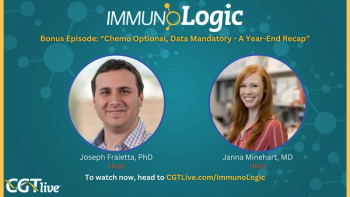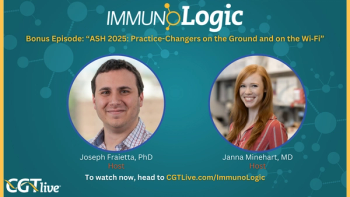
New Data Shows Promise for Investigative XLRP Gene Therapy
The study presented at AAO provides an update on previously shared 6-month data from earlier this year.
According to late-breaking data presented at the virtual
The data builds upon
The Phase 1/2 open-label, multi-center, dose-escalation trial, co-led by investigators from Janssen and MeiraGtx and presented by Michel Michaelides, MD, assessed the safety of the gene therapy (its primary endpoint) as well as changes in visual function across multiple metrics and modalities.
The ongoing trials consists of 3 phases: dose-escalation, dose-confirmation, and dose-expansion. Thus, in the dose-escalation phase, patients (n = 10) were administered low (n = 3), intermediate (n = 4), or high (n = 3) dose AVV-RPGR via subretinal injection.
The injection targeted the central retina in the eye that was more affected at baseline. Further, the investigators considered the untreated eye as a control.
Full-field static perimetry was performed for each patient at baseline, 3, 6, 9, and 12 months to assess baseline retinal function and change over time.
In the dose-escalation phase, 3 of the total patients who received low and intermediate dosage demonstrated improvement or stability in retinal sensitivity in the treated eye.
As noted in the intermediate cohort, there were observed statistically significant differences in mean retinal sensitivity between the treated and untreated eyes (1.05 decibel [dB]; 90% CI, 0.81-1.29).
In both low and intermediate dosage cohorts, statistically significant differences were observed in central visual field progression rate between the treated and untreated eyes (low: 1.10 dB-sr/year; 90% CI, 0.10-2.10; intermediate: 1.26 dB-sr/year; 90% CI, 0.65-1.86).
Furthermore, the investigators observed efficacy signals at the 1st post-treatment assessments at 3 months. Improvements were sustained or increased at 12 months.
The study also reported on vision-guided mobility data. At baseline and 9 months, patients performed a vision-guided mobility maze in order to assess their ability to navigate across a broad range of controlled light levels (with 1 lux being equated to deep twilight and 256 lux being equated to an office work setting).
Thus, in the 9-month analysis, 5 of 6 patients demonstrated improvements in mobility at lux levels 1, 4, or 16. Furthermore, there was a significant improvement between treated and untreated eyes in the low and intermediate cohorts (n = 6) at 1 lux (-16.1 second; 90% CI, -9.91 to -22.1) and 4 lux (-3.71 second; 90% CI; -2.83 to -4.96).
However, the mobility test was not conducted for the high-dose cohort.
The most common adverse events associated with the therapy were related to the surgical procedure—which were considered transient and resolved without intervention.
Inflammation was reported in 2 patients in the high-dose cohort, and measures of visual function did not improve.
HCPLive® had the opportunity to speak with Michaelides about the significance of these findings.
“Not long ago, the majority of specialists and these types of patients would have been delighted at these types of therapy to slow the rate of visual loss,” he said. “The fact that we’re actually seeing improvements in vision is very unexpected in many ways, but clearly game changing.”
He also commented on the larger advancements of gene therapy within the field of ophthalmology, which he considered to be staggering and encouraging.
“I don’t expect it to slow any time soon,” Michaelides noted. “It’s certainly at the forefront of providing therapies for our patients with inherited retinal diseases.”
Newsletter
Stay at the forefront of cutting-edge science with CGT—your direct line to expert insights, breakthrough data, and real-time coverage of the latest advancements in cell and gene therapy.





































